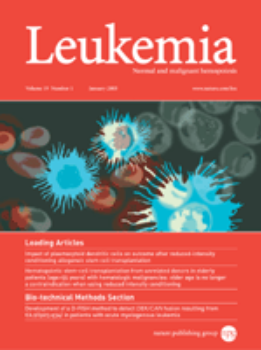综合全基因组和转录组测序作为儿童和青少年急性髓性白血病诊断和风险评估框架的临床经验。
IF 13.4
1区 医学
Q1 HEMATOLOGY
引用次数: 0
摘要
小儿急性髓性白血病(AML)表现出独特的遗传特征,包括具有预后和治疗意义的独特驱动改变和突变。细胞遗传学研究和下一代测序(NGS)面板检测一直是AML分子诊断的标准。虽然这些方法在大多数情况下能够诊断和确定预后,但它们有局限性,特别是在检测新出现的罕见的、复发性的遗传异常方面。在这项研究中,我们系统地回顾了我们使用全基因组和全转录组测序(iWGS-WTS)方法诊断儿童AML的实时临床经验,并比较了各种方法获得的检测结果,包括全基因组测序(WGS)、全外显子组测序(WES)、全转录组测序(WTS)、iWGS-WTS、细胞遗传学和靶向小组NGS。我们的研究结果表明,iWGS-WTS方法提高了临床相关遗传改变的识别,增强了精确的疾病分类和风险评估。此外,iWGS-WTS方法简化了样本采集并减少了测试冗余,使其成为儿童AML管理中传统诊断方法的实用和优越替代方法。本文章由计算机程序翻译,如有差异,请以英文原文为准。
Clinical experience of using integrated whole genome and transcriptome sequencing as a framework for pediatric and adolescent acute myeloid leukemia diagnosis and risk assessment.
Pediatric acute myeloid leukemia (AML) exhibits distinct genetic characteristics, including unique driver alterations and mutations with prognostic and therapeutic implications. Cytogenetics study, along with Next Generation Sequencing (NGS) panel testing, have long been the standard for molecular diagnosis of AML. While these approaches enable diagnosis and prognosis determination in most cases, they have limitations-particularly in detecting emerging rare, recurrent genetic abnormalities. In this study, we systematically reviewed our real-time clinical experience with the diagnostic workup of pediatric AML using an integrated whole genome and whole transcriptome sequencing (iWGS-WTS) approach and compared the test results obtained from various methodologies, including whole genome sequencing (WGS), whole exome sequencing (WES), whole transcriptome sequencing (WTS), iWGS-WTS, cytogenetics, and targeted panel NGS. Our findings demonstrate that the iWGS-WTS approach improves the identification of clinically relevant genetic alterations, enhancing precise disease classification and risk assessment. Additionally, the iWGS-WTS approach streamlines sample acquisition and reduces testing redundancy, positioning it as a practical and superior alternative to traditional diagnostic methods in pediatric AML management.
求助全文
通过发布文献求助,成功后即可免费获取论文全文。
去求助
来源期刊

Leukemia
医学-血液学
CiteScore
18.10
自引率
3.50%
发文量
270
审稿时长
3-6 weeks
期刊介绍:
Title: Leukemia
Journal Overview:
Publishes high-quality, peer-reviewed research
Covers all aspects of research and treatment of leukemia and allied diseases
Includes studies of normal hemopoiesis due to comparative relevance
Topics of Interest:
Oncogenes
Growth factors
Stem cells
Leukemia genomics
Cell cycle
Signal transduction
Molecular targets for therapy
And more
Content Types:
Original research articles
Reviews
Letters
Correspondence
Comments elaborating on significant advances and covering topical issues
 求助内容:
求助内容: 应助结果提醒方式:
应助结果提醒方式:


